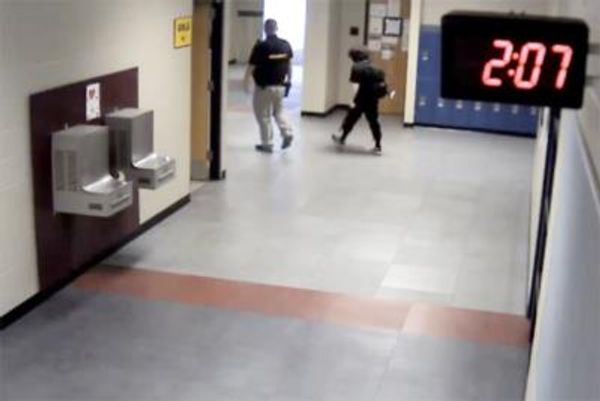The world's biggest economy shrank for a second consecutive quarter over the three months ending in June, Commerce Department data is expected to confirm later this week, but the debate as to whether it's slipped into recession is likely to continue for a long time after.
Most people, investors included, consider two consecutive quarters of negative GDP as the common definition of recession. However, much like the terms 'bear market', or 'market correction', which are collectively recognized but hold no official status, our standing definition of recession is largely ambiguous.
That's something the White House was keen to emphasize this weekend as the dismal tool of economic data continues to mount heading into the autumn mid-term elections.
"While some maintain that two consecutive quarters of falling real GDP constitute a recession, that is neither the official definition nor the way economists evaluate the state of the business cycle," the President's Council of Economic Advisors wrote in a blogpost. "Instead, both official determinations of recessions and economists’ assessment of economic activity are based on a holistic look at the data—including the labor market, consumer and business spending, industrial production, and incomes."
Politics? Maybe. Inaccurate? Well ... that depends.
Historically, the the National Bureau of Economic Research has been the final arbiter of recession, which it defines as “a significant decline in economic activity that is spread across the economy and that lasts more than a few months”.
One thing that could sway the assessment is the fact that first quarter GDP, pegged at -1.6%, was largely the result of subtracting $3.4 trillion in imports -- ostensibly brought in to meet improving post-pandemic demand -- from the overall total, turning an otherwise healthy reading into a contraction.
The NBER says there is "no fixed timing rule" when it comes to its final recession decision, but notes that earlier determinations have taken between "4 and 21 months".
Others aren't prepared to wait that long, however, including former White House economic adviser Kevin Hassett, now a senior fellow at the Hoover Institution, noting that in each of the past ten times the U.S. has seen two consecutive quarters of negative GDP, a recession has followed.
"We're ten-for-ten" he told CNBC Monday.
The bond market would seem to agree: benchmark 2-year Treasury note yields were last seen trading at around 3%, while 10-year notes were pegged at 2.976%.
According to a study from the San Francisco Federal Reserve, a sustained inverted yield curve -- a method of tracking U.S. government borrowing costs -- has preceded all of the nine recessions the U.S. economy has suffered since 1955, making it an extremely accurate barometer of financial markets sentiment.
Treasury Secretary Janet Yellen, however, pushed back at both the bond markets' assessment and the suggestion that two quarters of negative GDP would confirm a U.S. recession, telling NBC's 'Meet The Press' Sunday that the economy is rather "in a period of transition in which growth is slowing and that’s necessary and appropriate."
"A recession is a broad-based contraction that affects many sectors of the economy," Yellen argued. "We just don’t have that."
At least not yet, but things are certainly moving in that direction.
S&P Global's closely-tracked PMI index for the services sector -- the lynchpin for U.S. economic growth -- fell below the 50 point mark that separates growth from contraction for the first time in two years this month, while jobless claims rose to the highest level in more than eight months last week.
Corporate earnings are also in the pits, with collective S&P 500 profits, excluding the record results expected from the energy sector, likely to fall by 3.2.% when compared to last year.
Consumer sentiment is sitting at an all-time low, according to data from the University of Michigan's benchmark survey, while June retail sales data showed a modest month-on-month decline once the impact of inflation is factored-in to the overall total.
Headline inflation surged to a 41-year high of 9.1% last month, while so-called core inflation, which strips-out volatile components such as food and energy prices, rising by a faster-than-expected 5.9%.
Put it all together and you have the Atlanta Fed's GDPNow forecasting tool suggesting the U.S. economy is currently shrinking at a 1.6% clip over the first three weeks of the third quarter.
Federal Reserve Chairman Jerome Powell, in fact, has warned of upcoming 'pain' for the U.S. economy as he marshals the central bank's battle -- largely in the form of interest rates hikes -- against the fastest inflation in forty years,
The CME Group's FedWatch suggests a firm 77.5% chance of a 75 basis point rate hike Wednesday, a move that would take the Fed's key rate to a range of between 2.25% and 2.5%, but with bets on follow-on move of the same size in September pegged at 43.4%.
Powell, who warned in May that brining down inflation would "likely involve some pain" insisted last month that he wasn't trying to induce a recession in order to get the job done more quickly.
"We understand the hardship that people are experiencing from high inflation, and we’re determined to do what we can to get inflation back down," he told reporters during his regular press briefing in Washington.
What he didn't say was whether the economy was headed towards recession. And, given our lack of a consistent definition, who could blame him?







